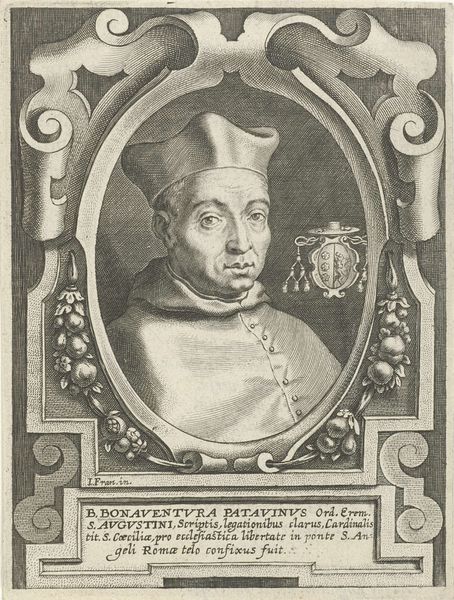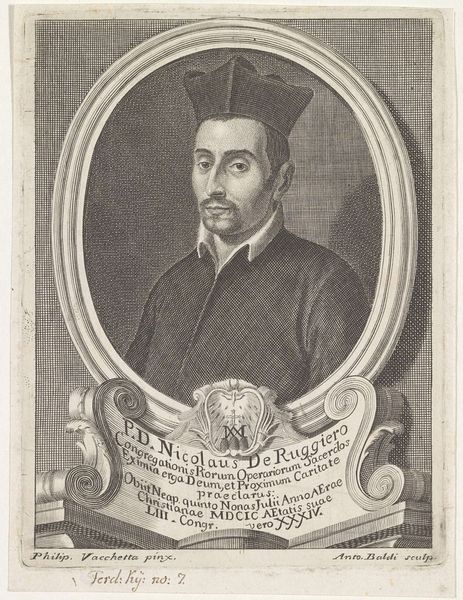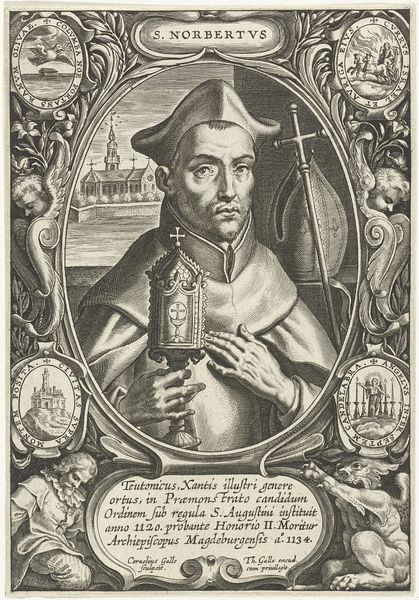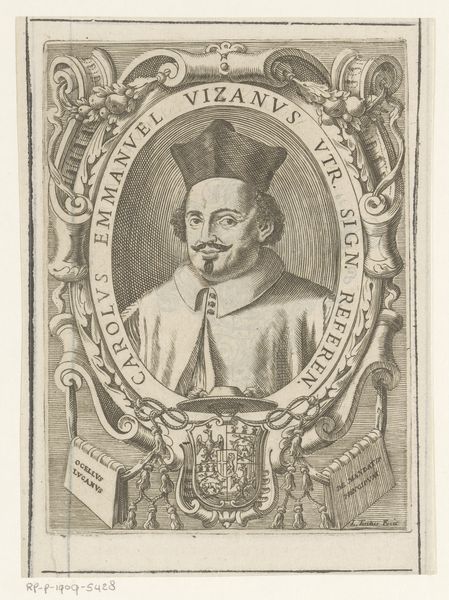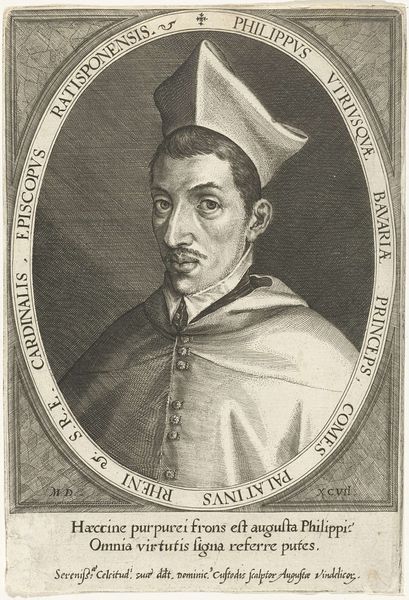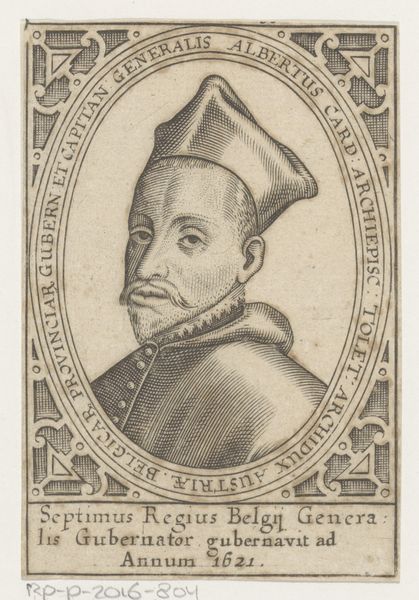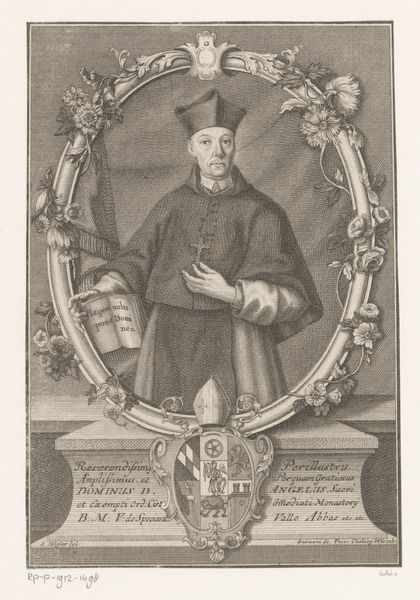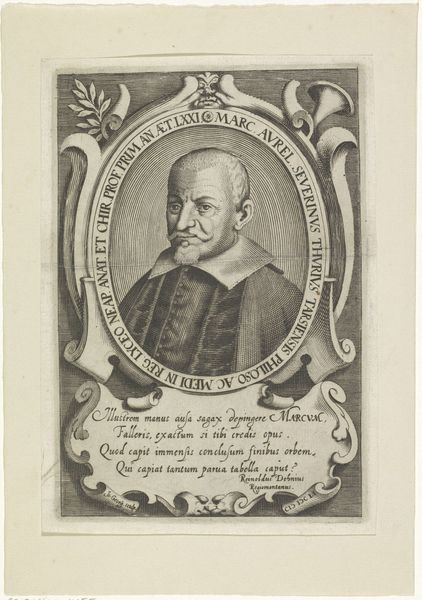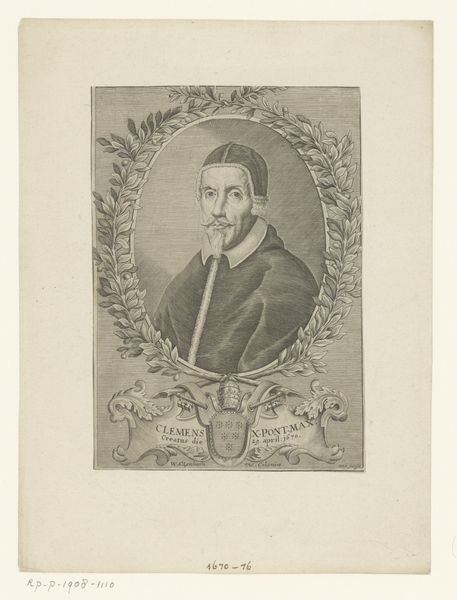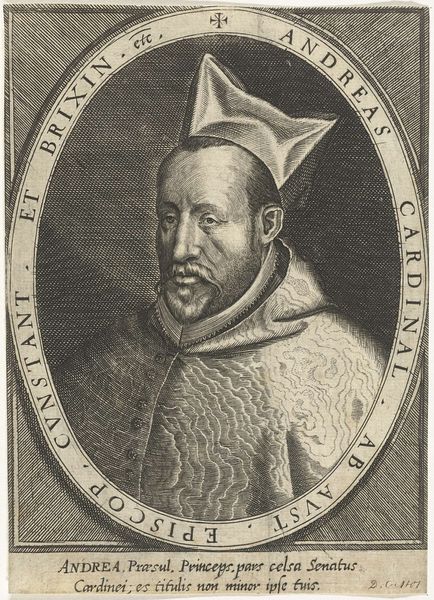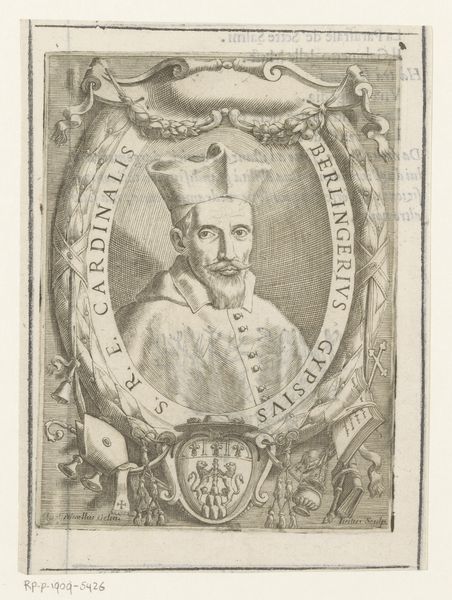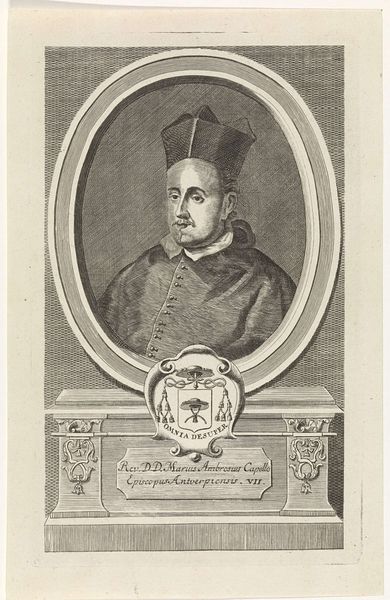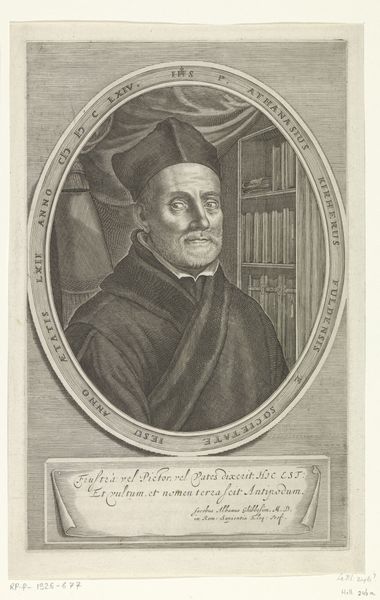
print, engraving
#
portrait
#
baroque
# print
#
portrait drawing
#
history-painting
#
engraving
Dimensions: height 153 mm, width 117 mm
Copyright: Rijks Museum: Open Domain
Curator: Here at the Rijksmuseum, we have a print dating roughly from 1586 to 1676, presenting H. Ignatius van Loyola. It's the work of Cornelis Galle I. Curator: The stark monochrome immediately strikes me. It’s such a studied composition, encased in that decorative border—at once serene and intense, don't you think? Curator: It’s an engraving, so consider the artisanal labor involved in its making. The printmaking tradition allowed for the widespread distribution of imagery, a powerful tool during the Counter-Reformation. Curator: Notice the textures achieved purely through line work—the soft fabric of his vestments, the delicate rendering of his face. And the contrast with the stylized, almost rigid lettering... it’s masterful. The book that Ignatius holds seems particularly illuminated. Curator: Yes, the book containing the rules of the Society of Jesus. Consider it in the context of 16th and 17th-century religious conflicts. This print, reproduced and distributed, served as visual propaganda, promoting the order’s values and authority during a time of upheaval and reformation. Curator: I see. The oval frame enhances the saintly presentation. The flaming heart with "IHS", Christogram to the left adds a fervent Baroque energy. I particularly enjoy how Ignatius fixes us with that composed gaze; the intensity feels quite personal despite being part of such structured artwork. Curator: Printing was key to the distribution of power and ideology. Understanding the processes reveals a lot about art’s impact during this transformative period. Galle’s craftsmanship ensured these messages were disseminated efficiently across societal lines. Curator: Yes, viewing art by focusing on technique reveals artistic choices, from stylistic preferences to composition. Thanks for reminding me to place it within society at large and consider its dissemination! Curator: A formal approach sharpens one's visual literacy, showing us that close inspection of the print uncovers further depths than initially apparent, helping one better recognize cultural forces at play during artistic creation.
Comments
No comments
Be the first to comment and join the conversation on the ultimate creative platform.
